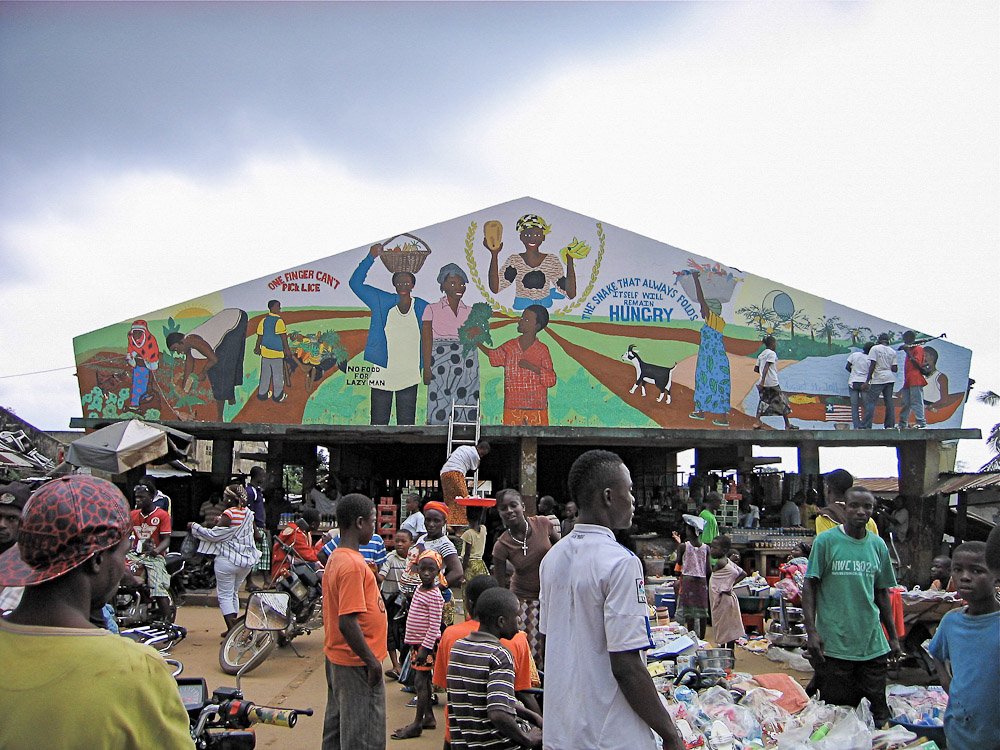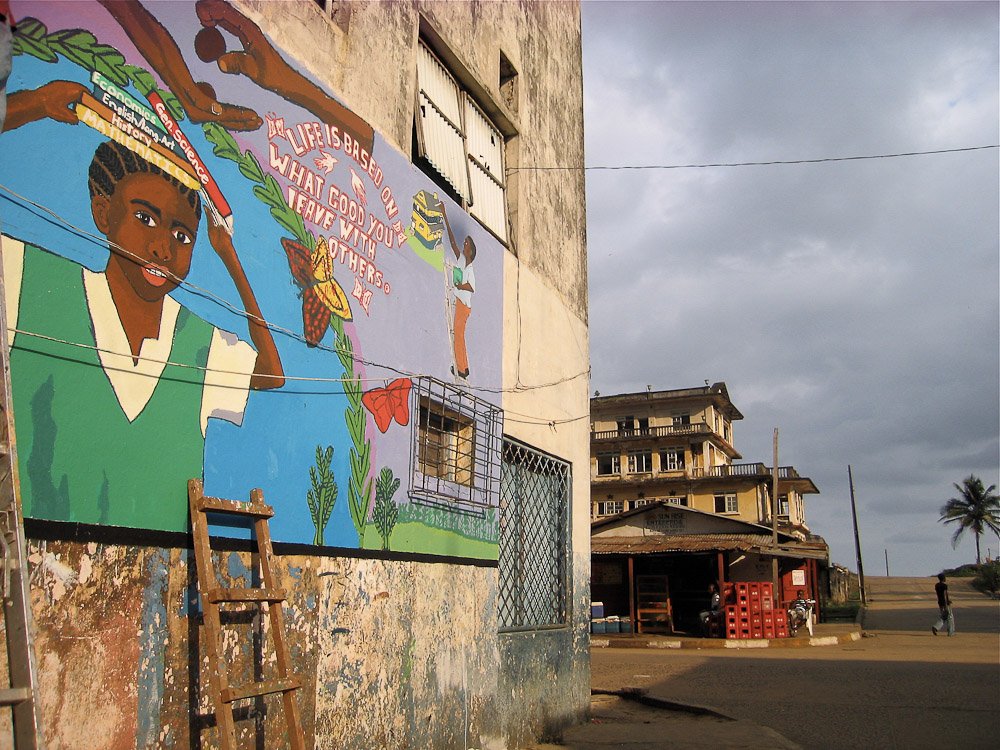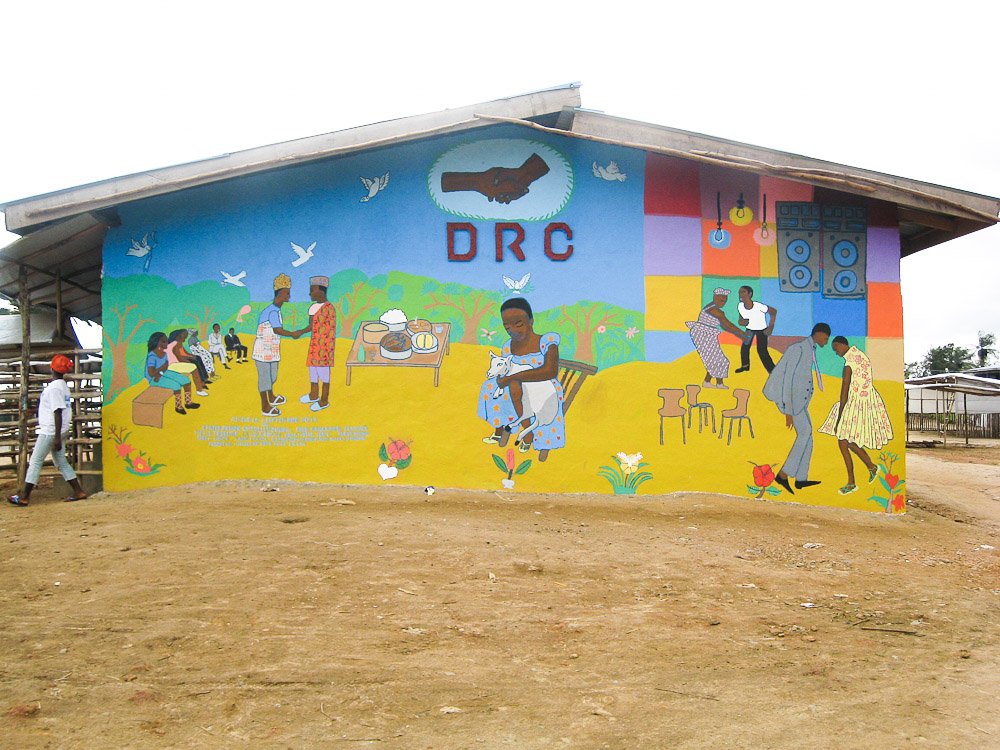Liberia
A small country situated on the west coast of Africa, Liberia is home to 5 million people who are descendants of freed people of color from the United States called Americo-LIberians, and indigenous peoples. The country is experiencing a period of growth and stability after surviving a 14-year civil war that ended in 2003.
Explore Projects in Liberia

Visions of Hope
-

April – August 2011
-

193,238 people reached
-

Transformed a war-torn town
-

56 youth and 10 community leaders participants
-

80 youth sessions
Visions of Hope
Visions of Hope engaged the community of Harper, Liberia, a place still recovering from the devastation of war. CC provided 56 school children aged 8-18 with trauma-informed art activities designed to support healing and self-expression and develop social skills. A rare opportunity for recovery and support in one of the country's most remote areas, community and youth engagement led to the creation of 4 public murals portraying a hopeful vision of the Harper community after recovery.
The International Foundation and the generosity of individual donors made this project possible.
-
Harper, is a place where structures destroyed in war almost 20 years ago still stand throughout the city. Living with visible reminders of war makes it harder for communities to recover from trauma and nurture a vision for a brighter future. We wanted to inspire and engage residents there through art and community building.
During the project, we engaged 56 schoolchildren aged 8-18 in Harper in a series of 80 public art sessions. CC designed sessions to foster personal expression and social connection, while providing trauma-informed art engagement. We facilitated 5 community leadership meetings and, in collaboration with our local partner Child Art Liberia, provided a three-day intensive training to 8 public school teachers on integrating the arts into education.
Murals created
For five months, we worked with community members, teachers and youth to create 4 public murals celebrating Liberian culture and transforming the war-torn landscape through art. The murals envision Harper as a thriving community, each showing a challenge the community faces—disease, war, infrastructure and economy— and a hopeful vision of life when the community has met and overcome those challenges.
Spotlight: Market Mural
This collaboratively developed mural shows a thriving and healthy Harper, represented by a bustling marketplace: the hub for community and economic activity.
On the far left stand a woman and man, shown on a farm where they grow food to sell in the market.
In the center, two women and a boy leave the market carrying produce.
In the top middle is a market woman holding fruit in her hands and smiling in welcome, a symbol of the women who work in the market.
To the right a man brings in his daily catch of fish alongside a woman carrying a tub of fish atop her head to sell at the market. Harper, and much of Liberia, is on the ocean, so fish are a very important source of food, life and culture.
The mural’s roads are well-maintained and lead to the market. This is important because the region's often impassable roadways make it extremely difficult for farmers to get their products to a central market where they can be sold.
The Community Arts Council developed messages capturing the importance of hard work and cooperation to the Harper community throughout. Two examples: “No food for lazy man,” “A snake that always folds itself will remain hungry” are both expressions meaning that if you don’t work, you won’t have food.
“What I believe is that through the paintings you can impart knowledge on people. There are people who are illiterate, who don’t know how to read and write, especially in Liberia here, and through seeing the paintings they will get to know that the paintings are imparting a certain knowledge in them, and they will understand that.”
- Kadiatou, Participant
“For me, it was like people getting to know I had the gift of drawing. It’s like exposing to the world that I really have the gift. I was happy that the world knew.”
- Diana, Participant
“The paintings are important. They make the city look beautiful, attractive.”
- Archie Doe, Participant




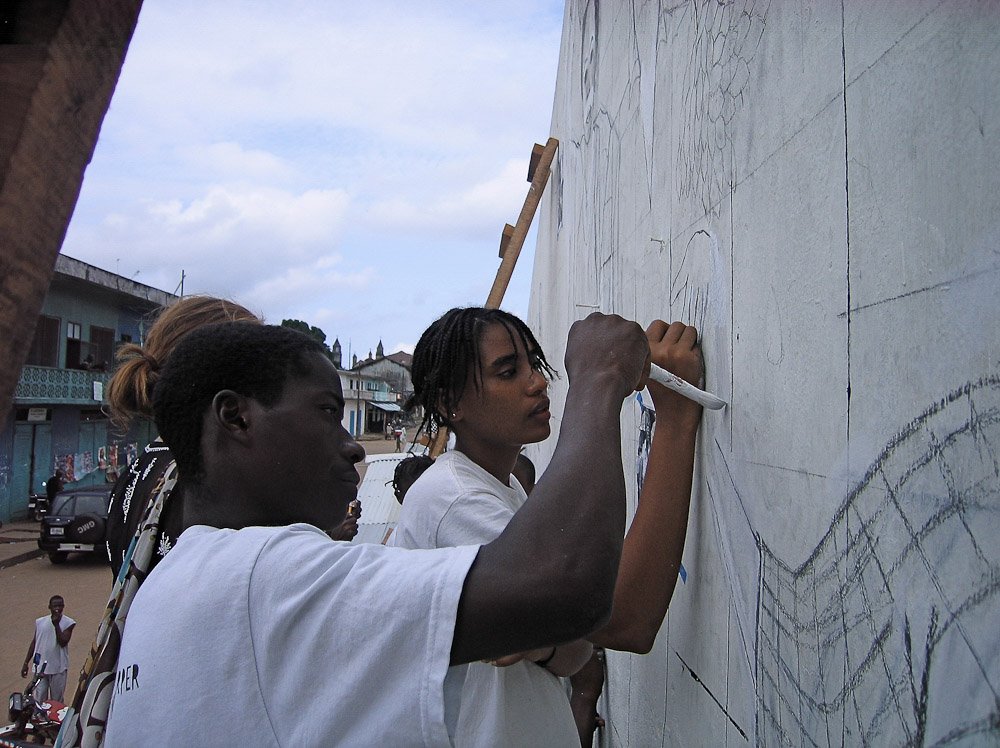



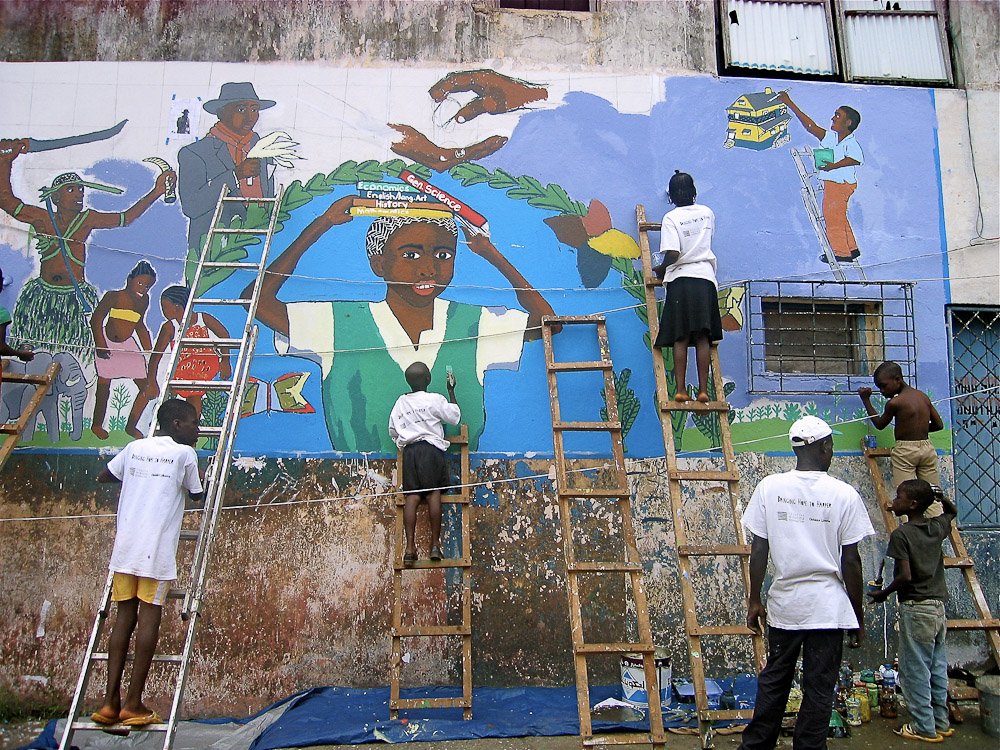




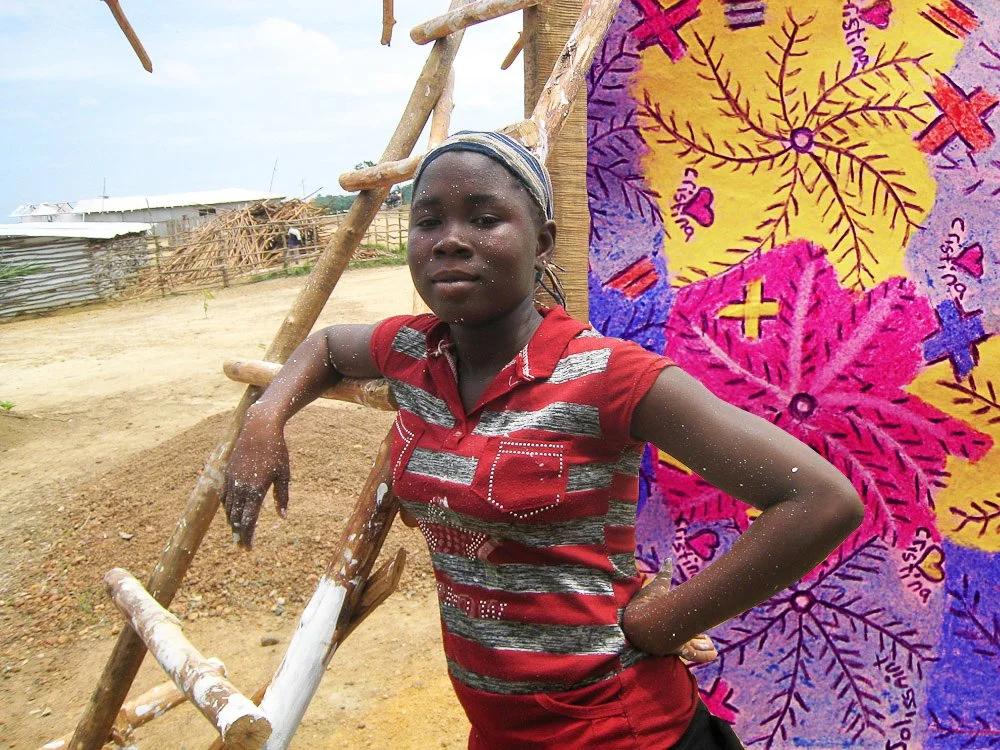
Little Wlebo Refugee Camp
-

July – September 2012
-

6,388 people reached
-

Built community and solidarity
-

27 youth and 25 community leaders participants
-

35 youth sessions
Little Wlebo Refugee Camp
The Little Wlebo Refugee Camp project invested in youth recovering from displacement and conflict by giving them the opportunity to reflect and express themselves through art. Located in southeastern Liberia, the camp houses refugees from civil unrest in the Ivory Coast. CC arrived after residents had been there for one year and directed efforts at the youth in the camp lacking access to any educational or recreational opportunities.
Support from our partner the Danish Refugee Council (DRC) made this project possible.
-
The Little Wlebo Refugee Camp in southeastern Liberia was established in 2011 to assist thousands of refugees fleeing from civil unrest in the Ivory Coast. Community members there were still recovering from the traumas of violence and displacement when Colors of Connection arrived a year later. The camp hosted approximately 8,500 refugees.
We focused our efforts on out-of-school youth in the camp because they were among the most marginalized and at risk of being overlooked and under-supported. Aged 11-19, participants were too old to attend primary school and didn’t have access to any recreational activities. As adolescents in an intense period of developmental transition, they stood to gain from the social and emotional benefits of art.
Throughout the project, youth participated in art activities designed to nurture their emotional expression and relationships with one another.
The project created a sense of place, culture, and self-representation for refugees of Little Wlebo. Taking place so soon after conflict, access to collaborative creative space was especially impactful. Creating murals gave youth in the camp a valued and prided role.
Murals created
The Little Wlebo community chose two transformative themes for their murals: education and peace. Their Peace Mural depicts the desired agreement among leaders that would end conflict, and the Education Mural promotes education and its opportunities.
Spotlight: Education
Refugee youth in the Little Wlebo camp created a mural showing the importance of education, a choice inspired by the difficulty accessing education in the camp because there are no secondary schools there.
In the center a man and his son are walking toward the school just ahead of a split in the road, ne path marked “non” that leads into the forest, and the other “oui” leading to the school (in french – “yes” and “no.”). The image reflects the unfortunate reality that some parents don’t send their children to school, choosing to have their children work instead.
In the foreground a woman walks with her daughter on the path to the school. The school itself is under construction, with people mixing cement and building a wall around the school, expressing the desire–and hope= for more schools to be built.
On the bottom right, a schoolboy is shown with a head full of new information - words, letters and arithmetic, symbolizing the transformation of the mind that occurs through education.
“Through the work of Colors of Connection the refugee camp community witnessed a positive transformation of their space, from one that was utilitarian and impersonal to an expression and celebration of their culture. Importantly, the project worked with marginalized youth, raising their status and making them the agents of change in their community.”
- Audrey Crawford, Camp Manager, Danish Refugee Council
“Thanks to Colors of Connection, now we are loved by the community.”
- Teka, age 16, Little Wlebo Project Participant


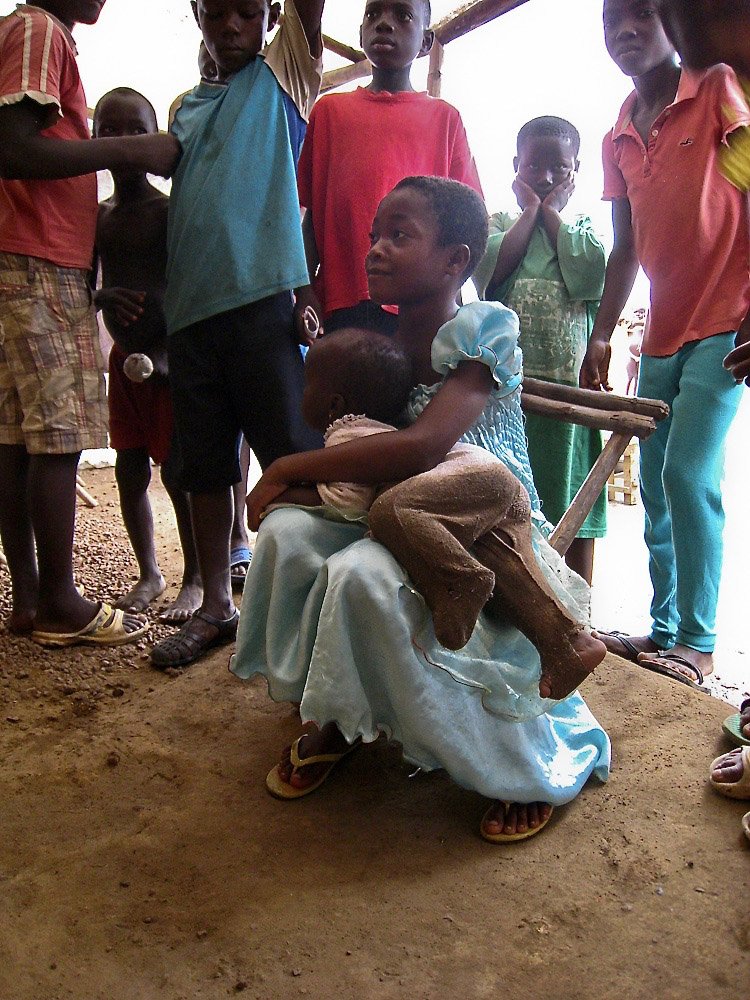






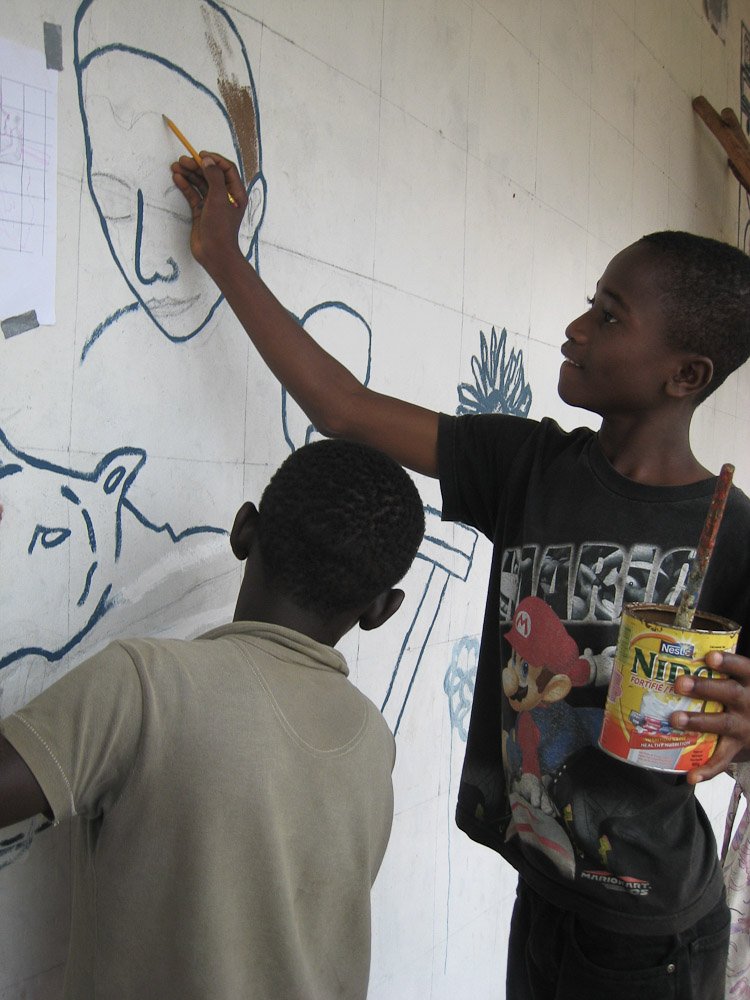



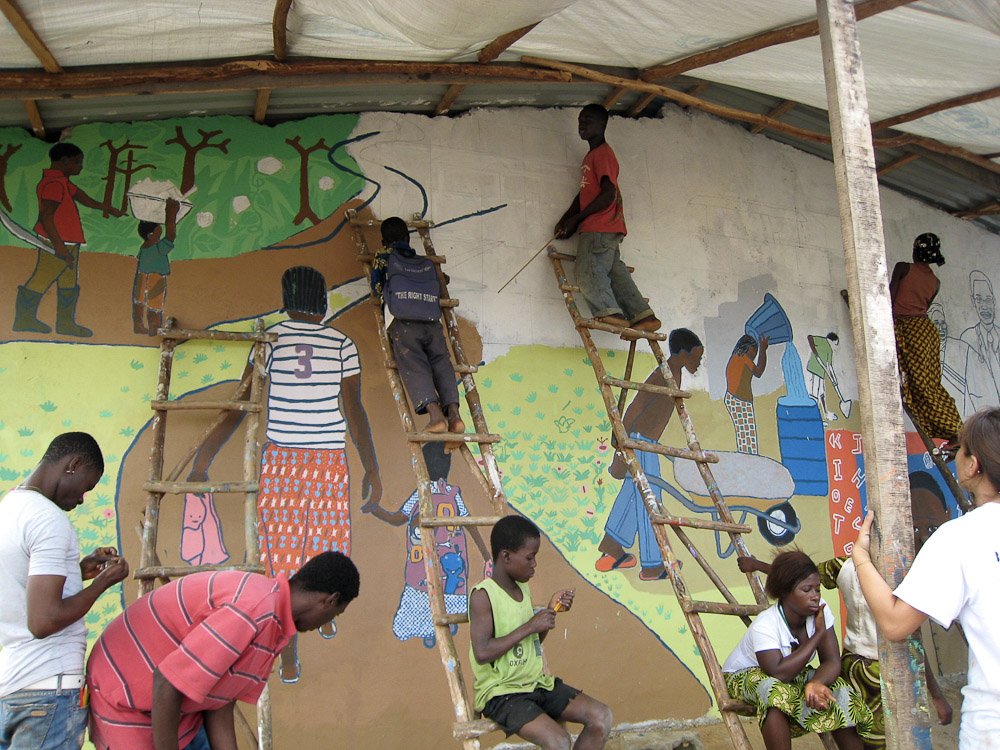




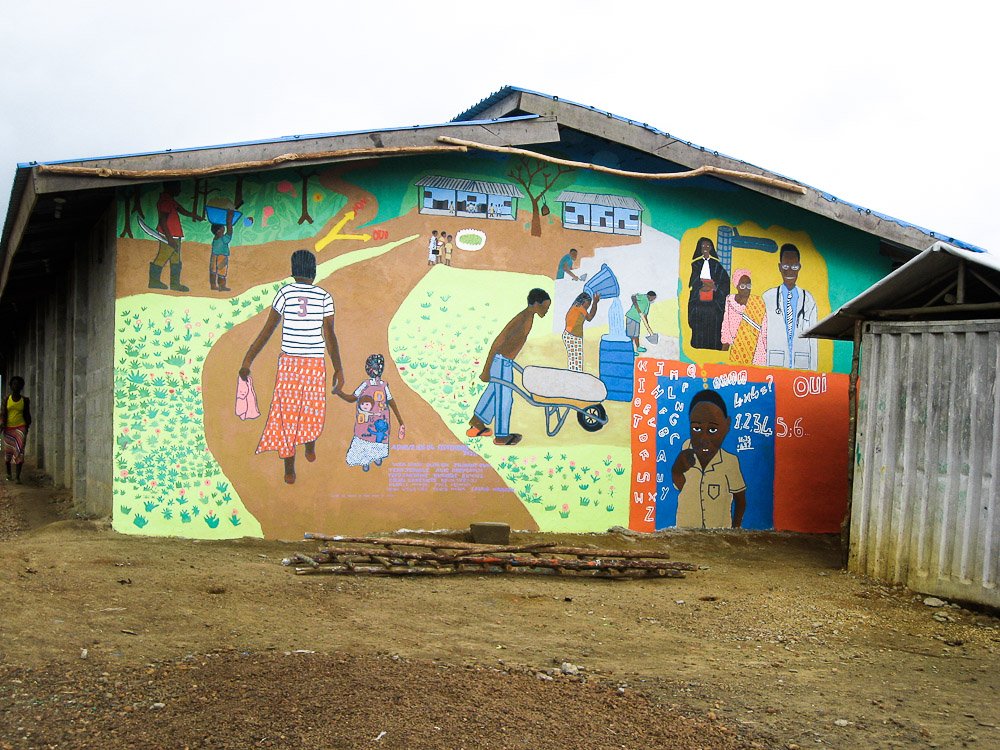

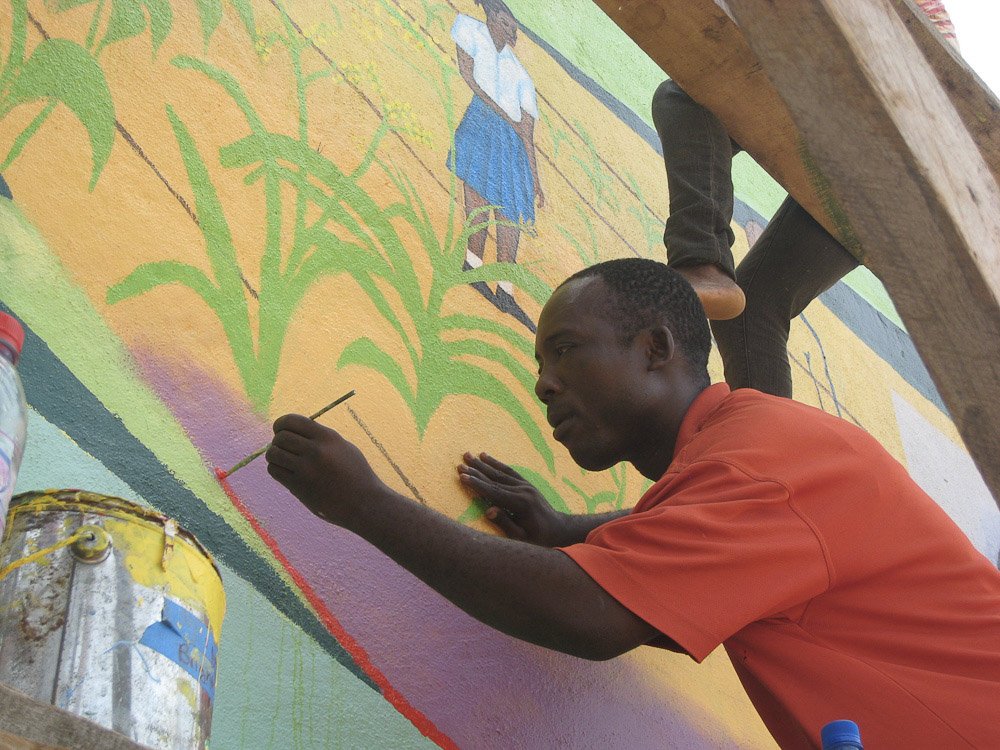
Tubman University
-

May – July 2012
-

1,350 people reached
-

Trained future teachers in the use of art in the classroom
-

14 youth and 7 community leaders participants
-

24 youth sessions
Tubman University
The Tubman University project introduced the integration of art into the teaching approaches at Liberia’s Tubman University. Liberia doesn’t include art in education, meaning that students there don’t experience the personal, social and educational benefits. CC provided a practical immersive experience by training Tubman students in the College of Education to utilize art to augment teaching strategies and improve learning.
This project was made possible with support from our partner W.V.S. Tubman University.
-
In Liberia, art is excluded from the educational system. Young Liberians don’t have the opportunity—or basic access—to things in school that are taken for granted in wealthier nations, like learning how to mix colors and telling stories through drawing and clay sculpting. Instead, the education system focuses on rote memorization—an approach showing minimal positive impacts for learners. It’s also one that ignores the universal need for creativity, personal expression and critical thinking.
With the Tubman University Project, Colors of Connection had the opportunity to train college students on how to integrate arts into the classroom setting. The Principles of Teaching the Arts in Education was an innovative course within the College of Education at the W.V.S. Tubman University in Harper, Liberia. It was designed to teach student teachers how arts can support learning, and practical ways to integrate it into the classroom.
Murals created
As part of the applied learning, students created a mural on their campus that expressed how the University envisions its impact on the development of Liberia. Each of the 5 colleges are represented, showing how they fuel development and transformation.
Spotlight: Transformation Through Worthy Service
The five Colleges of the university are each represented by a distinct image in this mural.
On the left, the College of Engineering and Technology is represented by two people consulting the blueprint for a bridge. In Liberia, badly maintained roads (many of them, including main roads, are just dirt) and bridges (some amateurishly constructed of logs) impede development. In this image, this lack of adequate infrastructure is being addressed.
At the top, the College of Agriculture and Food Science is represented by a man plowing rice fields. In Liberia, citizens are working to rehabilitate the agricultural sector and support food sovereignty.
Next to the rice fields the College of Education is represented by a girl in uniform making her way to school, promoting female education.
In the center of the mural a nurse, Representing the College of Health Sciences, looks into a microscope and consults a textbook.
On the right a group of students from the College of Management and Administration and the College of Art and Science discuss global issues highlighting the desire for Liberia to be more connected with the global community.
Written across the mural is Tubman University’s motto “Transformation through Worthy Service,” highlighting that individuals are positively transformed by working together for the greater good
“Art can make a positive impact in Liberia in the sense that in creating an avenue to send students to school who have an interest in art will help, because artists are the ones who are very sensitive of looking into the problems of people.”
- Scearis Doe, Tubman University student in Principles of Teaching the Arts in Education
“The arts will make a positive impact here in Liberia because it helps [students] to create something from the imagination. It helps them see colors, being blended, coming together, something come to life. So it will help in developing students. It will help in the development of Liberia. I believe that.”
- Khaliatu George, Tubman University student in Principles of Teaching the Arts in Education
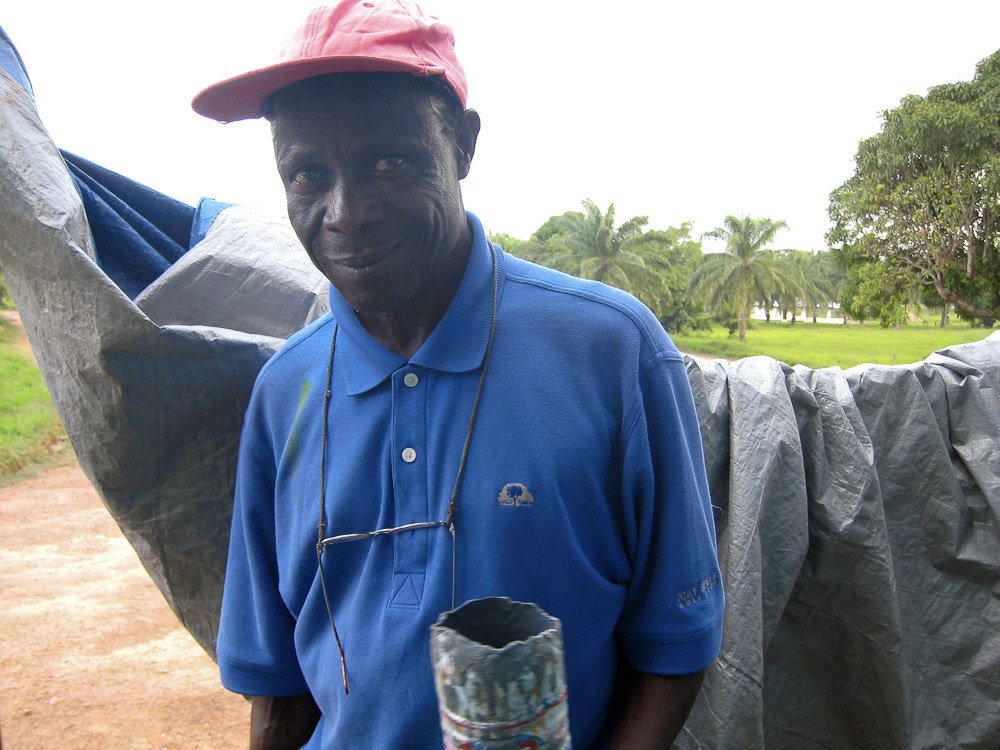





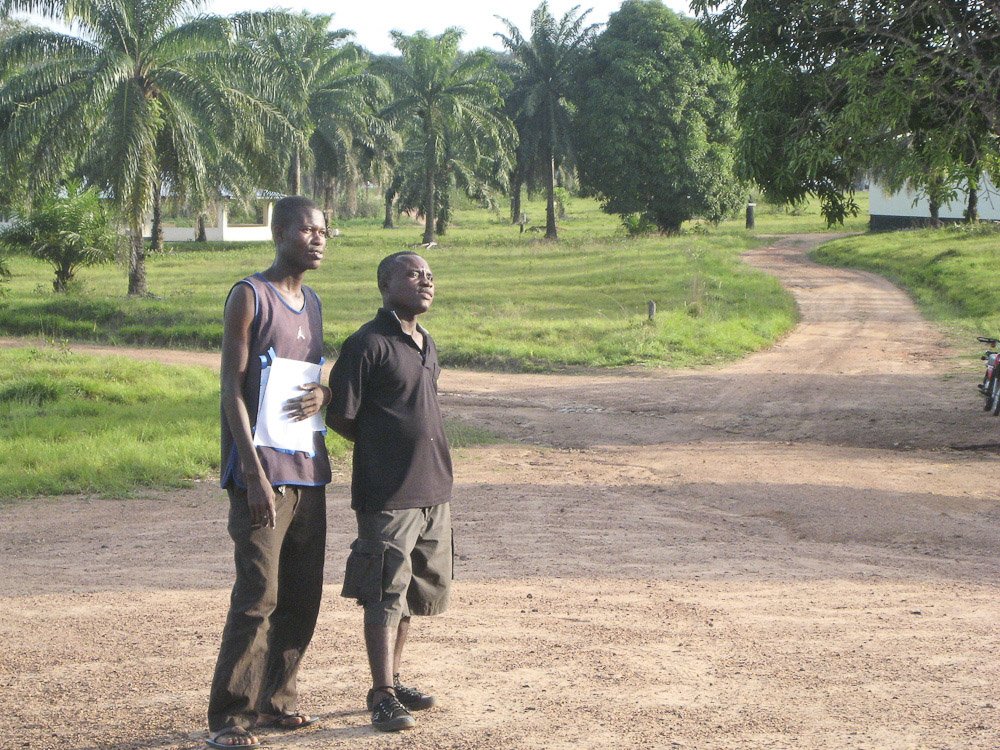



Oxfam Hygiene Promotion
-

October – December 2011
-

6,388 people reached
-

Produced informational paintings on hygiene promotion
-

7 youth participants
-

15 youth sessions
Oxfam Hygiene Promotion Project
In the Little Wlebo Refugee Camp, residents don’t have access to running water or clean toilets, placing them at high risk for infections and disease. Commissioned by Oxfam, CC facilitated the production of a series of signboards educating the public and promoting hygiene practices. CC worked with 7 participants of the Visions of Hope Project, providing them with income and the opportunity to build artistic skills while supporting an impactful public health effort.
Our partner Oxfam made this project possible.
-
Colors of Connection created informational signboards on hygiene practices. Residents here are at high risk of exposure to disease and infection because they live in dense quarters with no running water and limited resources. Poor sanitation and contaminated water are linked to the transmission of life threatening diseases including cholera, diarrhoea, dysentery, hepatitis A, and typhoid.
After the success of the Visions of Hope project, Oxfam contracted Colors of Connection to deploy a project commissioning participant students from Visions of Hope to produce informational paintings promoting hygiene. We chose 7 of the most talented participants, who brought their skills and enthusiasm to the project while earning an income and gaining recognition for their work. Over a period of 3 weeks and 15 sessions, the youth participants created 12 signboards depicting safe health and hygiene practices that were installed in the refugee camp, reaching an estimated 6,300 residents.
“After we did the drawings [in the Harper City project] an organization called Oxfam saw the paintings… and we started doing a little drawing for them, painting signboards to be [placed] in the refugee camp. It helped us too because it gave us some money for the painting.”
“People get to be educated through the paintings. It will help improve the life standard of the people.”
- Philip Toe, age 15, Oxfam project participant










